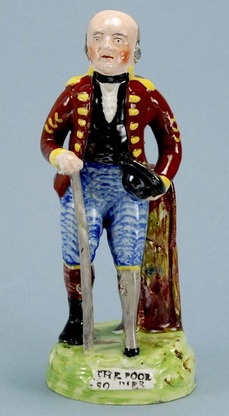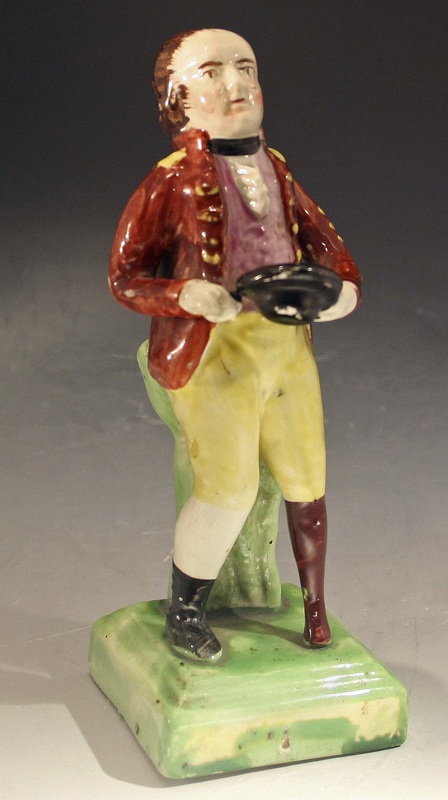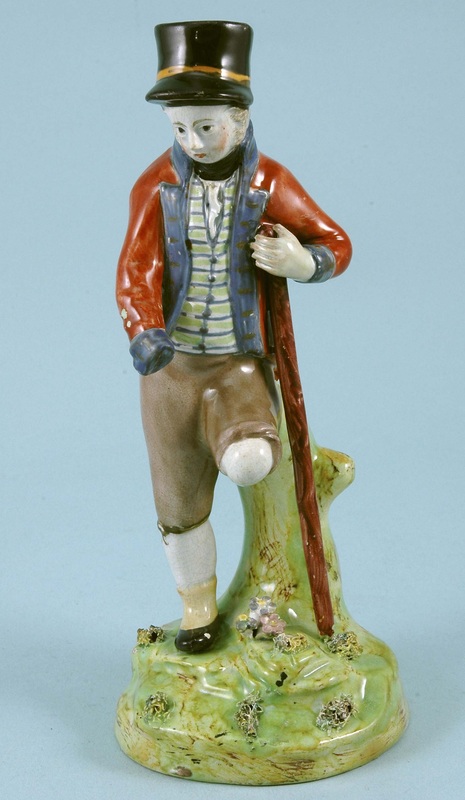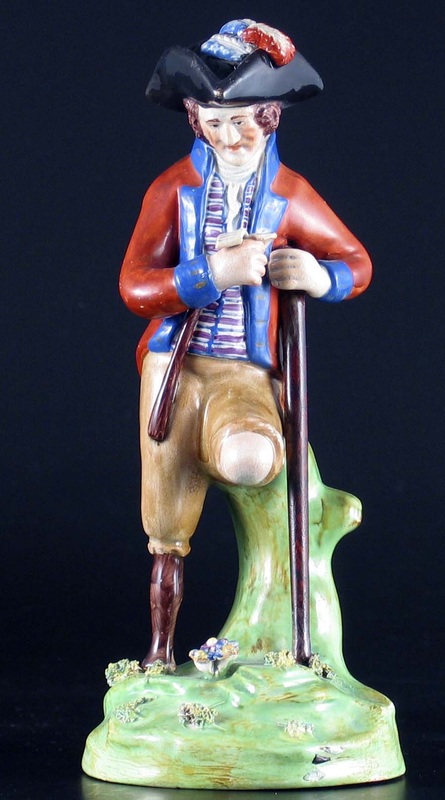Today, hardly a week goes by without us hearing about some amazing new medical device or procedure. Think back to the eighteenth century for a moment, and what would you guess was the most significant medical advance of that century? The answer is rather frightening. Remember that in those not-so-long-ago days, when antibiotics and modern surgery and anesthesia had not yet enabled repair to injured limbs, amputation was relatively common place. To take off a limb without fatal blood loss was challenging, so the prize for the medical advance of the eighteenth century goes to a screw tourniquet invented in 1718 by the French surgeon Jean Louis Petit. This device reduced the risk of below-the-knee amputations and it enabled above-the-knee amputations in some instances.
Early Staffordshire figures mirror life warts and all--or should I say artificial limbs and all?--and so we find several figure models of amputee soldiers. The figure below leaves no doubt as to what we are seeing.


















